19 Of The Most Iconic Openings In Horror Movie History
On this list you can discover the horror movies with the most iconic openings—films that will grip you and make memorable impressions right from the start.
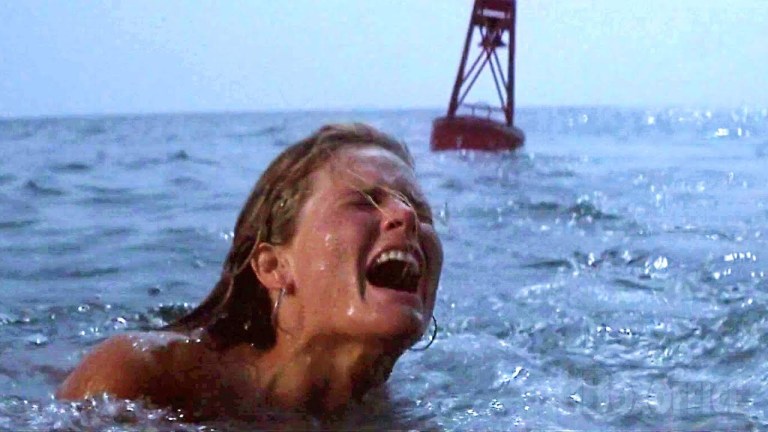
Opening scenes are crucial for horror movies because they provide filmmakers the opportunity to reel the audience in instantly. The introduction to the narrative sets the atmosphere, tone, and message for what awaits. The viewer gets a taste for the darkness, gore, brutality, terror, and hopelessness that is to come.
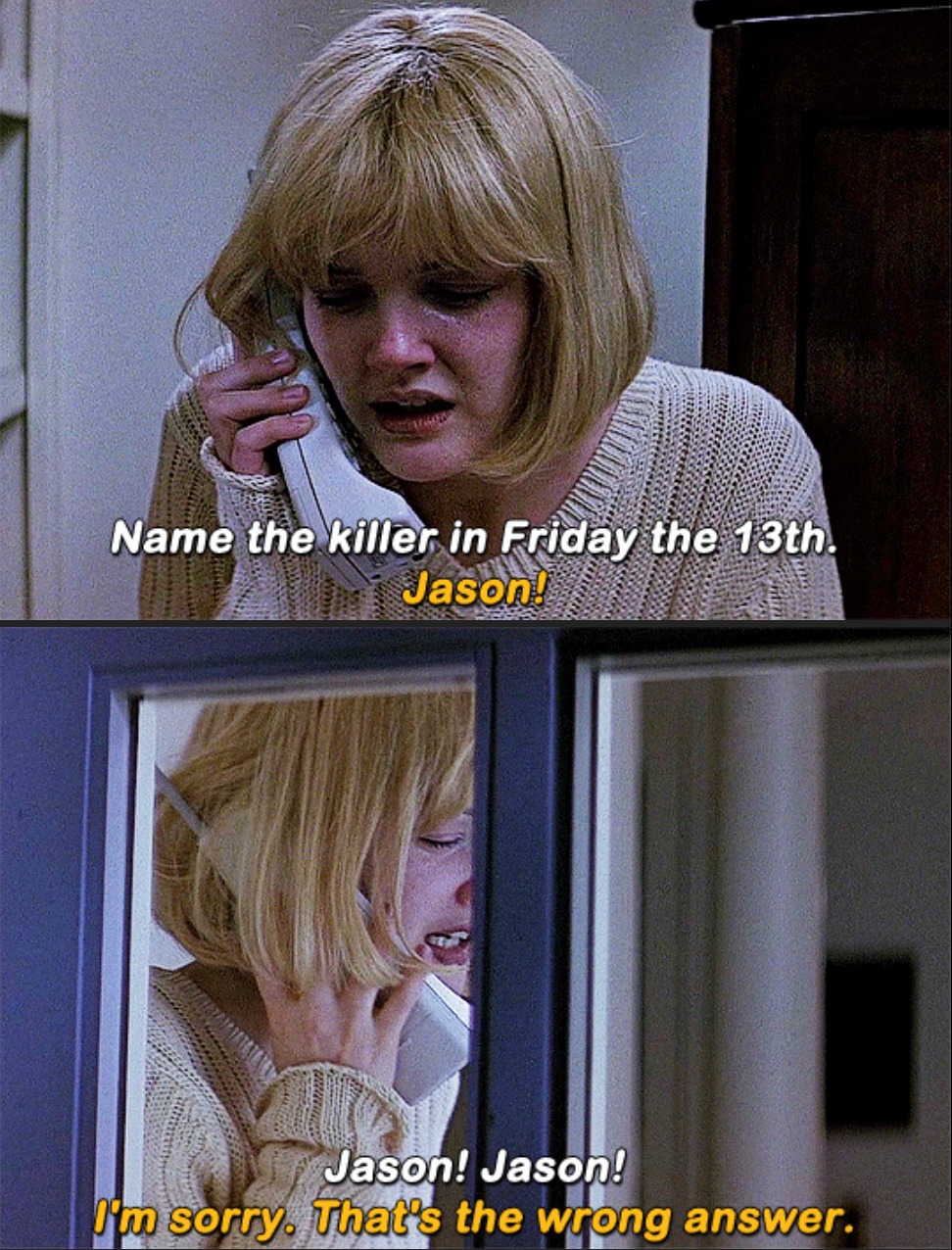
A few short minutes can make a lasting (and sometimes traumatizing) impression on the viewer—one that stands the test of time, whether the rest of the film is as impressive or not. Take Ghost Ship for example, which has a low score of 15% on Rotten Tomatoes. Agree or disagree, the general consensus was bad. Many critics were not on board with Ghost Ship (pun very much intended). Roger Ebert said that it “recycles all the usual haunted house material, but because it’s about a haunted ocean liner, it very nearly redeems itself.” Richard Roeper claimed that it was “a dumb movie with dumb characters doing dumb things and you have to be really dumb not to see where this is going.” And yet…horror fans will never forget the film’s iconic opening scene. And then there are great and celebrated films like Jaws, Scream, and Midsommar that rank among the ones with the most harrowing and iconic opening sequences. Ghost Ship will forever stand as a legend among them thanks to that brutal opening, ratings be damned.
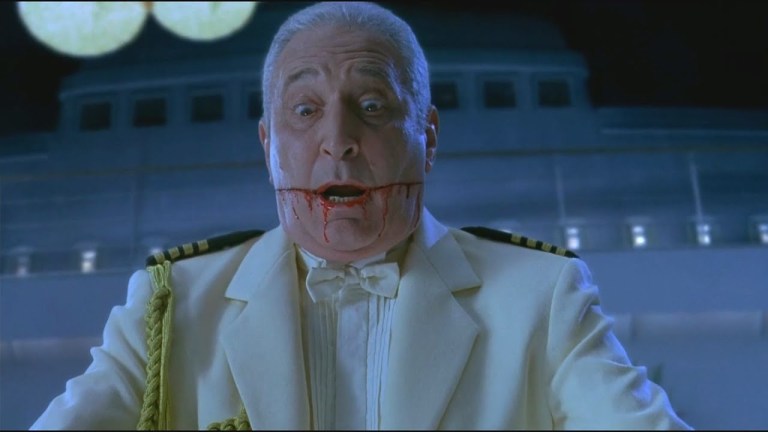
Curated below are the most iconic openings in horror cinematic history. They make it to this list because they effectively gripped the viewer by shocking, disturbing, or unsettling those who watch.
Black Sunday (1960)
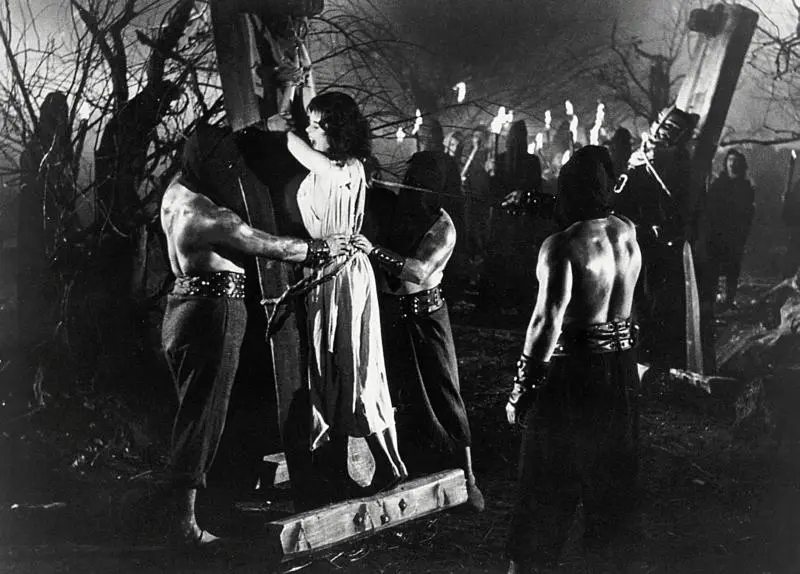
Barbara Steele stars as Asa Vajda, a Moldovan vampire witch executed by her brother and who returns centuries later to exact vengeance on his descendants. The first scene features shirtless, hooded executioners raising torches and gathering for Asa’s death sentence. One of the men brands her flesh with an S for Satan and the audience is offered a close-up. Then, another figure places the spiked mask of Satan over her face and brutally hammers it in, but not before she invokes a curse. Lightning, thunder, strong winds, and blood set an atmospheric and ominous tone for the rest of the movie. It’s all in black and white, yet still undeniably gruesome—and strangely beautiful.
The Texas Chainsaw Massacre (1974)
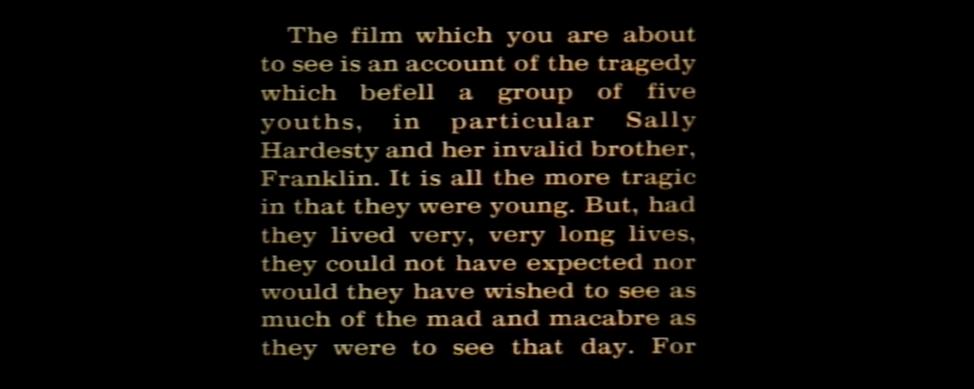
A scroll at the beginning highlights the horrors that await. At the time, viewers were compelled to wonder if the murders had actually occurred. To this day, those who aren’t avid horror fans require clarification that the plot is fictional. After the text on the screen, the viewer is subjected to camera flashes interspersed with graphic imagery of decomposing body parts. We see rotting hands, fingers, eyes, teeth, and other bits. The grisly sound of someone chopping up flesh and bone can also be heard. The camera moves to a pull back shot featuring a grisly corpse propped up on a tombstone and holding another decaying head. Instantly, the viewer is transported to a gruesome, hostile, and unnerving atmosphere—one that only increases in intensity as the film goes on.
Jaws (1975)

Before Casey Becker in Scream, there was Chrissie Watkins (Susan Backlinie) in Jaws. The film instantly introduces a character and kills her off. It’s a beautiful summer night in a beach town in New England. Chrissie runs away from a party to enjoy a swim under the moonlight, followed by a young man who quickly passes out drunk on the sand. She goes into the water, the camera following her over and beneath the surface. There’s a palpable sense of threat underwater. Chrissy is seen floating as an unseen force moves towards her and begins dragging her around She’s gurgling water and screaming for help that will never come. Suddenly, she’s pulled beneath. What follows is an eerie silence so stark in contrast to her earlier cries for help. Generations after remain terrified of what lurks in the water.
Suspiria (1977)

Dario Argento’s masterpiece Suspiria has the most visually striking introductory sequence in horror history. A cacophony of haunting music fills the scene with tension before the opening credits have even finished appearing on the screen. The surreal nature of the story that’s about to unfold is quickly established. The musical score ends and the camera pans to people exiting a German airport late at night. Among them is young and perpetually wide-eyed Suzy Bannion (Jessica Harper). The room from which she exits is washed with a red glow, foreshadowing the terror that lies ahead. The American student walks out into a torrential storm before hailing a cab, where a gorgeous array of red and purple colors burst through the window and surround her. When she makes it to the prestigious Tanz Akademie, “the most famous school of dance in Europe”, she bumps into one of its students, Pat Hingle (Eva Axén) fleeing in terror. The music begins again and the camera follows Pat into a friend’s lavish pink apartment where she’s quickly torn apart by an unseen entity. The way she cracks through the gorgeous stained glass is forever embedded in the viewer’s memory.
Halloween (1978)
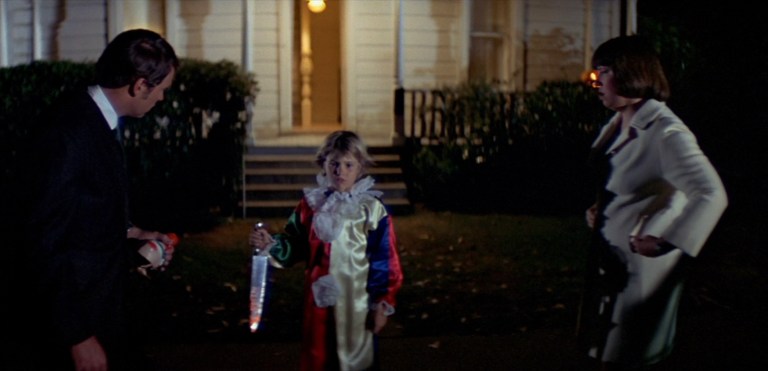
A long voyeuristic shot invites the viewer into the killer’s perspective. He zeroes in on a house, then to a side window where a young couple can be seen making out and subsequently going upstairs. Walking around back, he seemingly trespasses into the home. A light turns on, then a blurry hand opens a drawer and grabs a knife. Creeping in the dark, he sees the teenage boy bid farewell to the girl at top of the stairs and leave the home. The viewer is still being walked through the scene from the “voyeur’s” point of view. We see his hand pick up a mask and put it on. He walks into the girl’s room, stabs her to death, and exits the house. The camera changes perspective, zeroing in on the victim’s six-year-old brother in a clown costume holding the bloody knife. His emotionless demeanor cements the terrifying, dark nature of Michael Myers.
The Shining (1980)
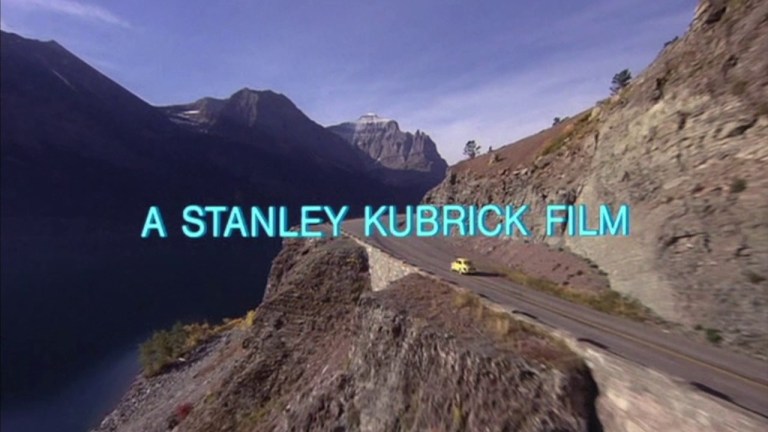
Nothing really happens in the opening of Stanley Kubrick’s classic adaptation of Stephen King. Yet, the opening credits stand as one of the most memorable introductions in cinematic history—not just in the horror genre. The eerie musical score is stark in contrast to the stunning mountain scenery as we follow the family’s car to the Overlook Hotel. It’s simple, but it establishes the atmospheric tone to follow for the rest of the film.
A Nightmare on Elm Street (1984)
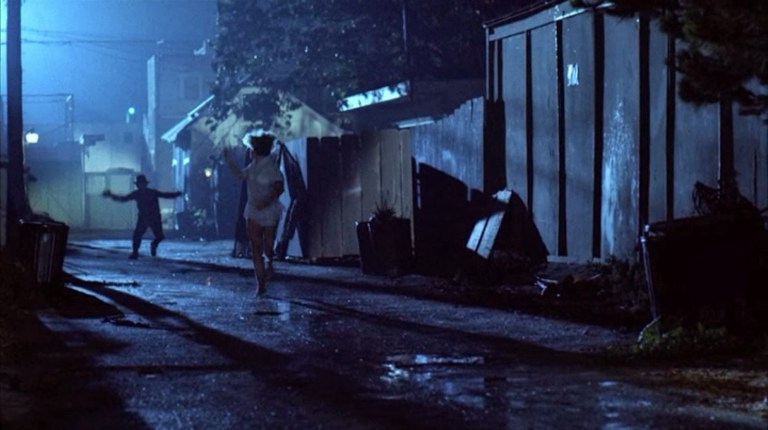
Our introduction to Freddy Krueger (Robert Englund) through Tina’s (Amanda Wyss) nightmare manages to create a simple, but petrifying opening. The camera doesn’t show his face, but the audience can see him assembling his signature razor gloves. Sinister music plays from a high-pitched keyboard and is paired with the screeching sound of metal. It raises the hairs on the back of your neck, yet it feels dream-like. The sharp shrill of the title flashes on the screen before we see Tina’s face of utter terror.
Scream (1996)

Wes Craven’s 13-minute opening sequence of Scream shocked audiences everywhere and forever changed the rules of horror. He iconically killed off Scream’s biggest name at the time, Drew Barrymore. Her star status coupled with the focus on her character in the promotional posters misdirected the audience into thinking she’d be the final girl. On the 25th anniversary of the film’s release Drew shared on her talk show, “You kind of always have this tension, but you kind of know that your hero is going to make it. And I thought ‘What if I die?’, and then it’ll be like all bets are off, anybody could get killed in this movie and would take away that cliché safety net of the girl always gets away.” She was originally cast as Sidney and completely changed the trajectory of the series when she volunteered as tribute.
Ghost Ship (2002)
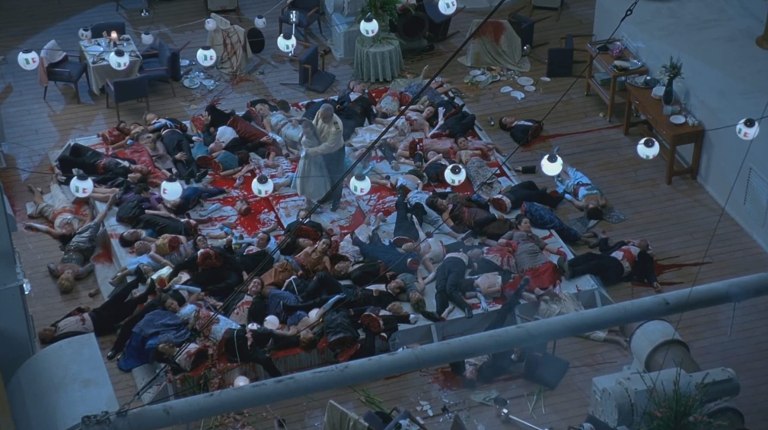
A fabulous party takes place on the ship. There’s a beautiful singer on stage and lots of dancing and drinking. The only child in sight, Katie (Emily Browning), appears bored until she’s asked to dance by the captain. We get a look at someone tightening a cord, which quickly whips across the party. Bodies are cut in half, limbs are cut off, and people are decapitated. The captain holds and comforts Katie until he, too, falls. Katie stands alone in terror and saved by her short height.
28 Weeks Later (2007)
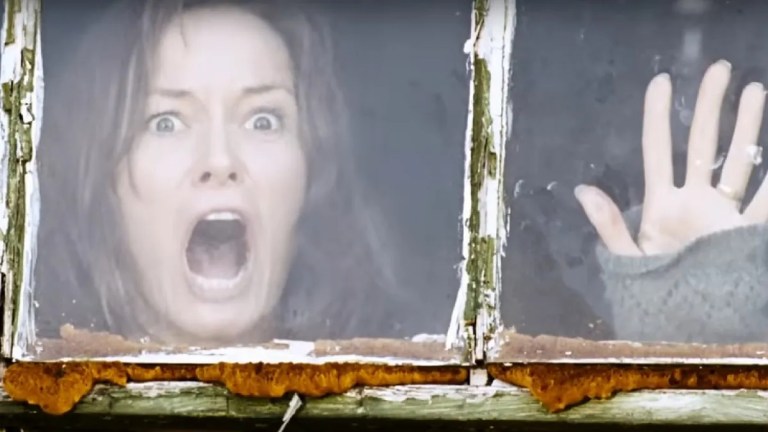
The intro to 28 Weeks Later wastes no time kicking into hyperdrive with its brutality. A group of survivors is introduced to the audience. They’ve found refuge in a cabin. We don’t get a chance to properly explore any of the characters before one lets in a helpless boy. Zombies shortly bust in and all hell breaks loose. One man is torn between escaping to safety or leaving the woman he loves behind. His decision of self-preservation is haunting, but there would be no story to follow had he not made the choice he made. His wife pleads through the window for him to return. Even the music evokes a sense of hopelessness as he runs through a field with a pack of zombies after him.
Dawn of the Dead (2004)
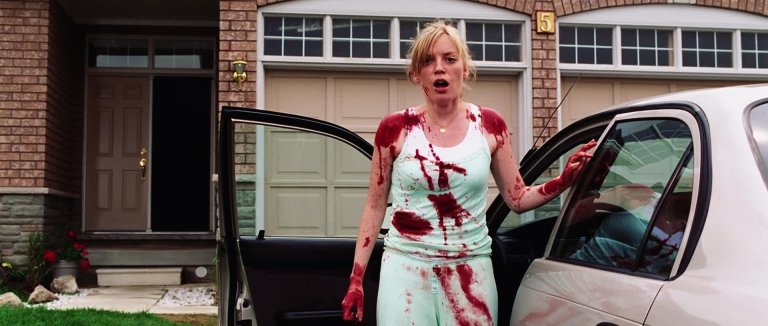
The first seven minutes of Zack Snyder’s remake of the same name are some of the most iconic in horror cinema. Ana (Sarah Polley) finishes a shift at the hospital and goes home to her husband Luis (Louis Perrera) in the suburbs. Unwinding after a long day, they miss a news emergency broadcast. The next morning, the clock strikes 6:37 as a neighborhood girl enters their bedroom and mauls Luis to death. He quickly reanimates as a zombie. Ana escapes out her window and into a terror-ridden suburban nightmare before crashing into a tree (and discovering the whole world has entered apocalyptic hell). Cue the opening credits.
Cabin in the Woods (2011)
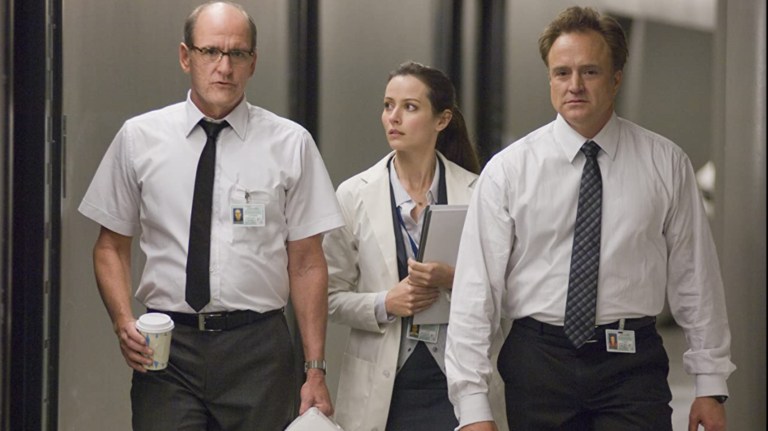
A group of college friends travel to a remote cabin where a sinister evil awaits them. Horror lovers are familiar with Cabin in the Woods, a meta horror that explores what has become of the genre and completely subverts it. If for some reason you have yet to watch the movie, then the less you know going in, the better. The opening scene is short and sweet, but original. It completely misdirects the audience and sets the tone for the comedic relief that awaits. Two middle-aged male coworkers chat at the watercooler, discussing marriage and starting a family. A younger woman in a lab coat interrupts them to tell them about the “incident” in the Stockholm facility. They discuss how the one in Japan will “get the job done” and theirs will come in second place. The two men drive off in a golf cart and make plans for the weekend. And boom! The most inventive and hilarious title card in horror flashes on the screen.
Sinister (2012)

Sinister’s opening shot is one of the most grim and unsettling intros to a movie. It’s a short one-take scene, but highly effective in disturbing even the most seasoned horror fan. It sets the dark tone for what’s to come. A super 8 camera films a family of four with bags over their heads and nooses around their necks as an eerie score of music plays. An unseen person causes a branch to be sawed off, sending the family to their hanging. Their feet kick as they struggle against the inevitable. The family hangs eerily still and then the title card appears at the bottom of the screen. Sinister stuff.
It Follows (2014)
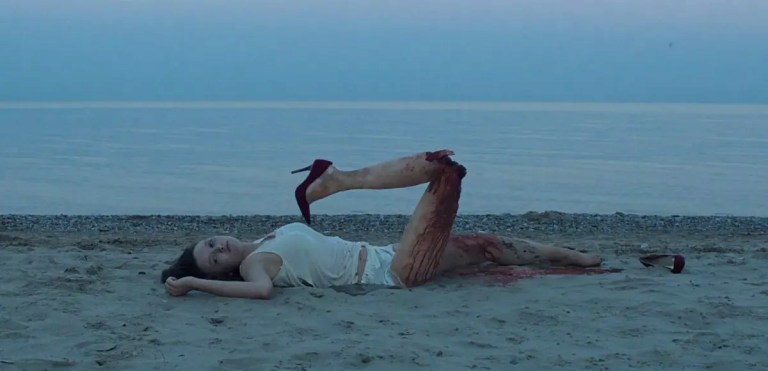
This ominous scene opens to a gray residential street. It then follows a clearly traumatized young woman as she flees in her car towards the beach. Something else is following her. The viewer has no idea what it is yet, but her terror is palpable. She sits on the sand and the vehicle’s headlights illuminate her as she hugs herself, emphasizing her hopelessness and fear. Her dad calls her and she apologizes to him for “being such a shit sometimes.” It feels like a final goodbye. Bam! The camera jumps to a gruesome shot in which her body lies lifeless and still in the sand, with her legs contorted into unnatural positions.
Get Out (2017)
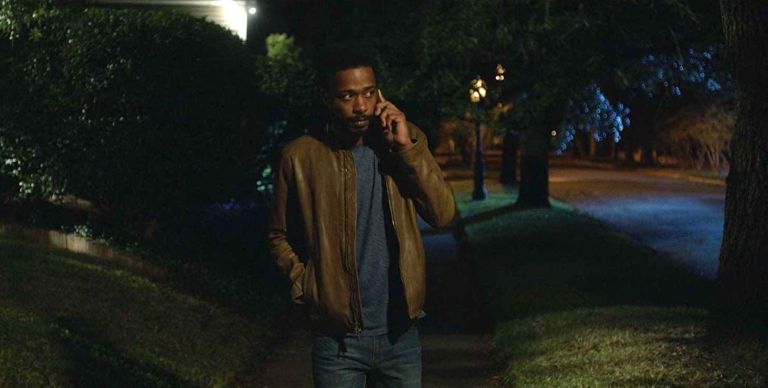
The abduction opening scene in Jordan Peele’s groundbreaking horror film foreshadows the plot as we see a young Black man be stalked and ultimately kidnapped on a white suburban street. The introduction makes a powerful statement from the get-go: what are considered safe spaces for others are oppressive to the Black community. It speaks of the unprovoked hostility Black people face for simply taking up space.
It: Chapter One (2017)
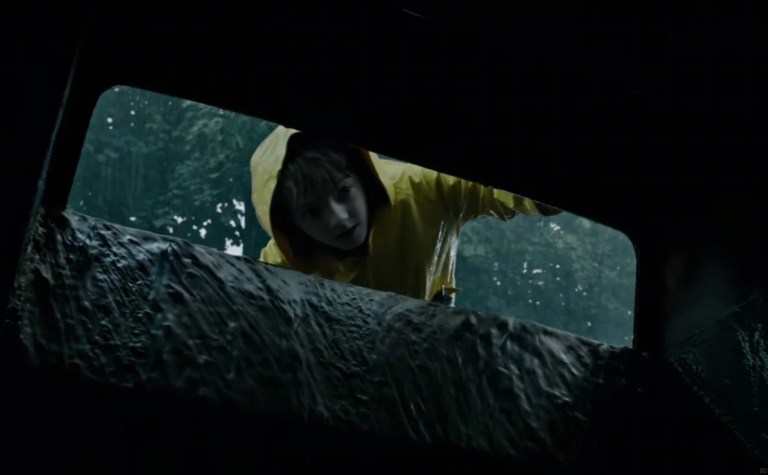
Any horror fan could tell you that they’ll never forget the image of Georgie being taken by Pennywise. The poor boy just wanted to sail his paper boat on a rainy day when it got swept into an open drain and caught by the demon-like clown. Those who read the Stephen King novel that inspired the movie know what awaits, but it’s horrifying nonetheless. His arm gets bitten off and he’s dragged to his doom into the sewer. It’s an unforgettable image, but what makes the scene so harrowing is the unhinged performance by Bill Skarsgård. Here is where we meet the new Pennywise, who is something much sinister than the villain in the original 1990 miniseries.
Midsommar (2019)
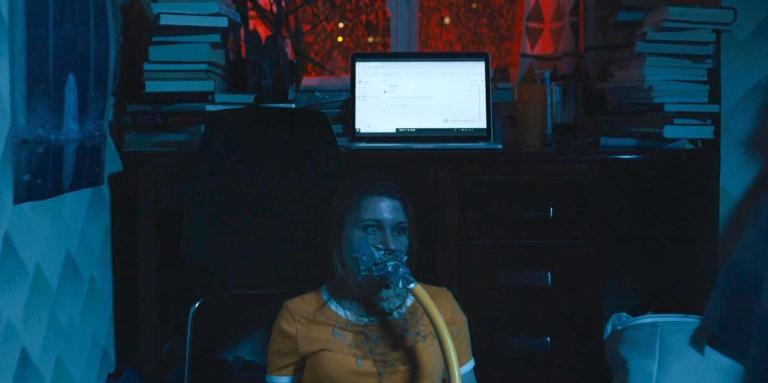
Immediately, the musical score disturbs and unsettles. The camera takes its time in revealing the horrific nature of the scene. A firefighter is seen turning off the ignition in a car. Emergency lights break through the darkness as the emergency responders make their way through the house and up the stairs. A deceased couple is zipped up in separate body bags. A younger woman sits dead with a homemade suicide mask glued to her face and vomit on her shirt. She has taken her own life and that of her parents. The scene cuts to her sister Dani’s (Florence Pugh) blood curdling wails. It’s one of horror’s most gut-wrenching performances, and one of the most emblematic depictions of grief.
Crimes of the Future (2022)
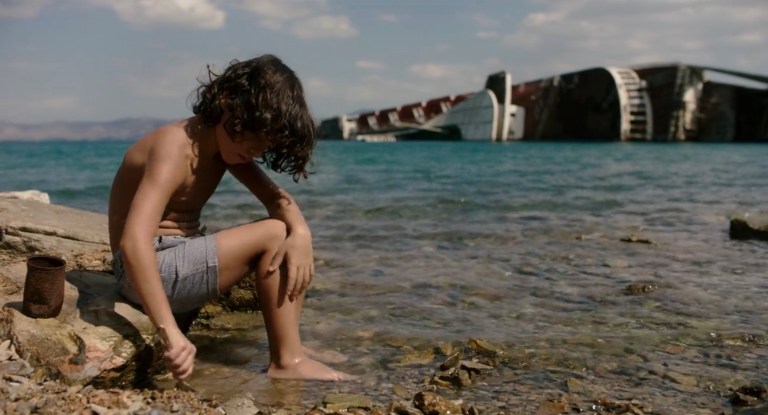
Crimes of the Future, which sees the human species adapt to a synthetic world, opens in true David Cronenberg fashion. A young boy sitting by the beach and digging his hand in the water. His mother calls out to him and tells him, “I don’t want you eating anything you find in there, you understand me? I don’t care what it is.” He goes into the house where he proceeds to eat a plastic trash can before being smothered to death with a pillow by his mother. The audience is left wondering how a mother could do such a thing.
Evil Dead Rise (2023)
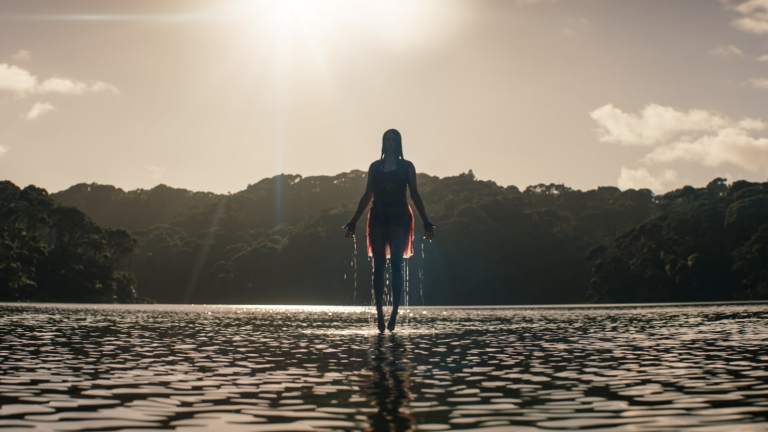
The Evil Dead Rise opening does a magnificent job at honoring the franchise. The camera flies through a forest into a lake taking on the perspective of an unseen force before revealing itself to be a drone. A young girl, Teresa, sits at the dock reading Wuthering Heights and makes her way to a cabin to check on her cousin Jessica. Something is very off with Jessica. Teresa doesn’t notice it until Jessica begins reading aloud what Teresa is reading in her head. Jessica’s voice gets deeper and deeper—and more demonic. She throws up before scalping Jessica and making her way to the lake where she decapitates her boyfriend. That last shot over the lake as she levitates is creepy…and deliciously fun. What makes this scene even better is how it’s later shown to connect with the end of the film.
Further reading:
